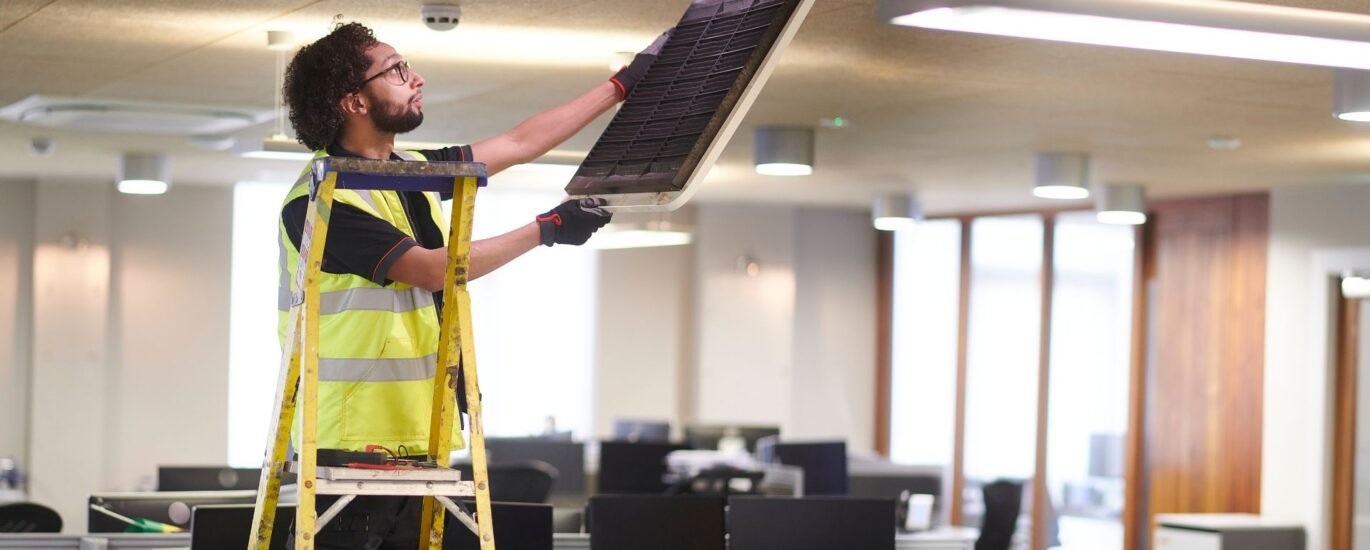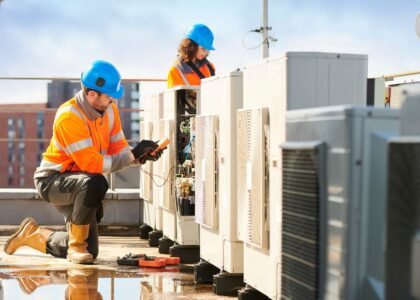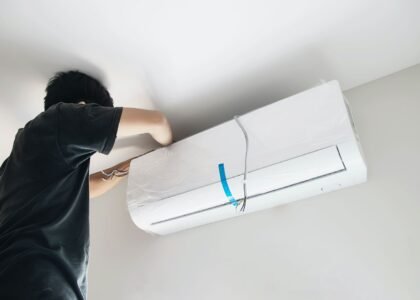When your air conditioner isn’t performing like it used to, many homeowners ignore the small parts—capacitors and contactors—only to see much larger issues down the road. In this post, we’ll dive into the ins and outs of capacitor and contactor replacement, why it matters, how the process works, and how to choose the right service in Cathedral City.
If you already know your system needs new components, feel free to jump to our professional services here: Expert Capacitor and Contactor Replacement Services in Cathedral City, CA
What Do Capacitors & Contactors Actually Do?
Your HVAC system has many moving—and electrical—parts. Among the most important, yet overlooked, are the capacitor and contactor.
Capacitor: The “Electrical Shock” Starter
- The capacitor stores and releases energy to help start your compressor and fan motors.
- There are two main types:
- Start capacitor: Gives a burst of power when the system first turns on
- Run capacitor: Provides steady voltage while the motor runs
- Over time, capacitors lose efficiency, making it harder for motors to start smoothly. :contentReference[oaicite:0]{index=0}
Contactor: The High-Voltage Switch
- The contactor acts like a relay or switch that powers the compressor and condenser fan.
- When the thermostat signals cooling, the contactor closes and sends electricity.
- If the contactor is worn, burnt, or sticky, it may fail—leading to system failure or constant cycling. :contentReference[oaicite:1]{index=1}
These two components essentially coordinate power delivery in your HVAC system. If either fails, the entire system can suffer.
Common Signs You Need Replacement
Here are red flags that your capacitor or contactor is failing (or already failed):
- Clicking, buzzing, or humming noises from the outdoor unit
- The AC won’t turn on, or turns off intermittently
- Fan motor won’t spin (or spins slowly)
- The system cycles on and off rapidly
- Higher-than-normal electric bills
- Burn marks, pitting, or discoloration on terminals
- Visual swelling or leaks on capacitors
When you notice one or more of these symptoms, it’s time to call in a pro. Ignoring them can lead to more extensive damage.
How Replacement Works: Step-by-Step Guide
At 1st HVAC Repair Services Cathedral City CA, we follow a careful process for safe, efficient replacement: :contentReference[oaicite:2]{index=2}
1. Power Down
We begin by cutting all electrical power at the circuit breaker—this is non-negotiable for safety.
2. Diagnostic Testing
Using specialized tools, we test capacitance, voltage, and other parameters to confirm which component(s) is at fault. We check surrounding parts too, so you don’t face cascading failures.
3. Remove Old Components
With precision and care, the technician disconnects and removes the faulty capacitor and/or contactor—avoiding damage to wires or terminals.
4. Install New Parts
We match the correct specifications (voltage, microfarad ratings, etc.) and securely connect all wiring. Many problems come from mismatched parts.
5. Test & Verify System
With power restored, we test the full system—measuring voltage, amperage, and overall operation to make sure everything works as intended.
6. Cleanup
Finally, we remove the old parts and clean up the workspace.
This structured approach helps avoid mistakes, reduces the risk of future breakdowns, and ensures smooth operation.
Benefits of Timely Replacement
Replacing your capacitor and contactor when they begin to fail brings several advantages:
- Restored efficiency — Weak parts cause the system to work harder, increasing energy costs
- Extended equipment lifespan — Prevent damage to more expensive components like the compressor
- Fewer emergency failures — A proactive fix is less disruptive
- Stable system performance — No more random shutdowns or voltage issues
Cost Considerations & What’s Reasonable
How much does it cost to replace a capacitor or contactor? Here’s a ballpark:
- Capacitor replacement: ~$250–$400 (parts + labor) :contentReference[oaicite:3]{index=3}
- Contactor replacement: ~$200–$450 (parts + labor) :contentReference[oaicite:4]{index=4}
- Combined replacement may vary depending on model, labor rates, and local pricing
Some homeowners report repair providers quoting high amounts—one user mentioned a $900 quote for replacing a capacitor and contactor on a 4-ton unit. Others say the parts cost is minimal (~$20–50) with the rest being labor. :contentReference[oaicite:5]{index=5}
Always ask for a breakdown of parts vs labor when getting a quote.
DIY? Think Twice
Yes, it’s technically possible to replace these yourself. But here are the risks:
- Capacitors hold charge even when powered off—they can give a dangerous shock :contentReference[oaicite:6]{index=6}
- Using wrong parts (wrong voltage or microfarad ratings) can damage your system
- Incorrect wiring or handling may void warranties or cause further failure
- You may miss secondary damage to wires, contacts, or nearby components
Unless you’re a trained electrician or HVAC technician, calling a professional is usually the smarter and safer choice.
How to Choose a Replacement Service in Cathedral City
When selecting an HVAC company, consider the following:
- Experience & specialization — A company focusing on capacitors/contactors is ideal
- Clear communication — Ask for wiring diagrams, part specs, and test results
- Local climate understanding — Desert heat is tough on electrical parts
- Responsiveness — Quick diagnosis and replacement can prevent serious failure
If you need help or want to schedule service, you can contact us directly or learn more about our capacitor and contactor replacement service here: Expert Capacitor and Contactor Replacement Services in Cathedral City, CA.
Maintenance Tips to Avoid Future Failures
To get the most out of your HVAC system and delay future capacitor or contactor failures:
- Schedule annual HVAC inspections
- Keep the outdoor unit clean and free of debris
- Avoid frequent on/off cycling of the system
- Consider surge protection—voltage spikes stress electrical parts
- If you hear odd noises or drops in performance, don’t wait—get a service call
Frequently Asked Questions (FAQs)
| Question | Answer |
|---|---|
| How long do these components last? | Generally 10–15 years, depending on use, power surges, and climate stress. |
| Can one fail while the other is fine? | Yes—you might replace only the capacitor or only the contactor depending on diagnosis. |
| How long does a replacement take? | Often 1 hour, though it depends on system model and component availability. |
| Is it okay to run the AC with a bad capacitor? | No. It can damage the compressor or motors, leading to more costly repairs. :contentReference[oaicite:7]{index=7} |
| Will the replacement improve energy bills? | Yes—restoring proper component function often lowers electricity usage. |
Wrap-Up
Your HVAC system is only as strong as its most vulnerable components—and capacitors and contactors tend to be weak links. Replacing them at the right time can save you from headaches, higher bills, and bigger repair costs later.
If you’re in Cathedral City or nearby and suspect you have a failing capacitor or contactor, get started now by checking out our expert replacement services or simply contact us to schedule a diagnostic.
Take action early—because a small component now could prevent a major breakdown later.
::contentReference[oaicite:8]{index=8}



